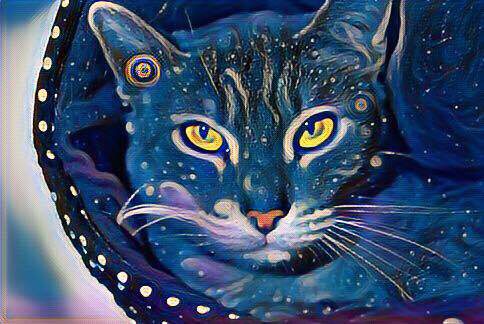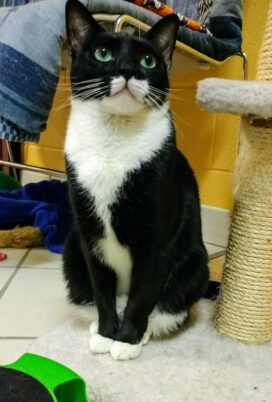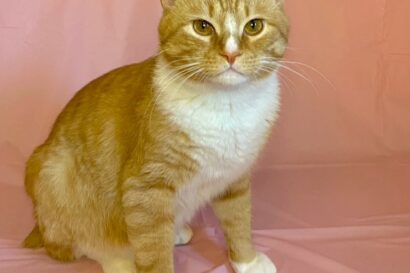

The cat population at Monadnock Humane Society has changed. Spirit Cats challenge us to find them homes.
We are seeing a shift in the types of animals taken in as strays or being surrendered. Rather than numerous “oops” litters of kittens, the cats coming to us are frequently older animals who have lived in multi-cat households of overwhelming populations. These cats are frequently difficult to place for a variety of reasons.
Take for example the elusive “scaredy-cat” that may prefer to be more of a roommate than a companion. These cats may have been under-socialized kittens that missed the vital socialization period with people the first few weeks of life. Or adult cats that have never before their home until the passing of an elderly owner and now cannot cope with the new changes of environment the shelter setting brings.
Whatever the reason, when these animals come to us, they are a challenge to re-home. Their target audience of adopters is very slim. When visitors walk through the shelter, these cats hide under blankets to stay inconspicuous. Although they don’t want to stay in the shelter, they avoid meeting their potential adopters.
Reframing the Challenge—House Spirits
Instead of seeing these cats aloofness as a problem, we decided to focus on highlighting the ways in which they enliven the homes in which they live. In materials developed by Dakin Pioneer Valley Humane Society of Springfield, MA, these cats are called “House Spirits.” Described as “very shy with people. They live in your home, but are rarely seen.” We are calling them Spirit Cats.
At MHS, we believe it is good luck to give a home to a Spirit Cat. Although your visitors may never see the Spirit Cat who lives in your home, the observant guest will recognize the signs: a catnip toy, a bowl of crunchy kibble and possibly a tail showing below the window curtains. Over time, the Spirit Cat you live with may allow you to touch her. Or, she may not. However, you’ll never come home to an empty house, while a Spirit Cat lives with you.
How to See a Spirit Cat

At MHS’ Adoption and Learning Center in Swanzey, NH, Spirit Cats are housed in their own multi-cat room. This is in an area of the shelter that is set back from the hustle and bustle of the adoption floor. There are signs on the door that talk about the Spirit Cat program and highlight the individual personalities of the cats currently in residence. One of the great qualities of a Spirit Cat is that they usually thrive on the company of other felines. So, if you are looking for a companion for your current house cat, consider adding a Spirit Cat to your family.
Adopters interested in visiting the Spirit Cats should talk with the adoption staff to learn about individual personalities. Adults and accompanied children should enter the Spirit Cat room quietly. Visitors should go slowly; taking a seat on the floor is a great way to see and be seen. The best way to interact with Spirit Cats is to play with a wand toy at a distance. This entices the cats to interact with people. Quiet, gentle visitors are a boon to these cats. You help the cats become more comfortable around visitors.
If you choose to bring home a Spirit Cat it may, over time, become so comfortable in your home that it chooses to hang out with you. Allowing the relationship to grow in the cat’s own time will surely help you reimagine the house cat. The beauty, grace, and charm of a Spirit Cat fills a house with love.
About the Author
This article was written by Ashley Okola, Assistant Manager and Feline Coordinator at Monadnock Humane Society. She has her Master of Science in Animals and Public Policy from the Cummings School of Veterinary Medicine at Tufts University. She shares her home with two cats, a golden retriever, a bunny, a toddler, and a very understanding husband.
This article first appeared in The Keene Sentinel’s ELF weekly magazine in 2017.

